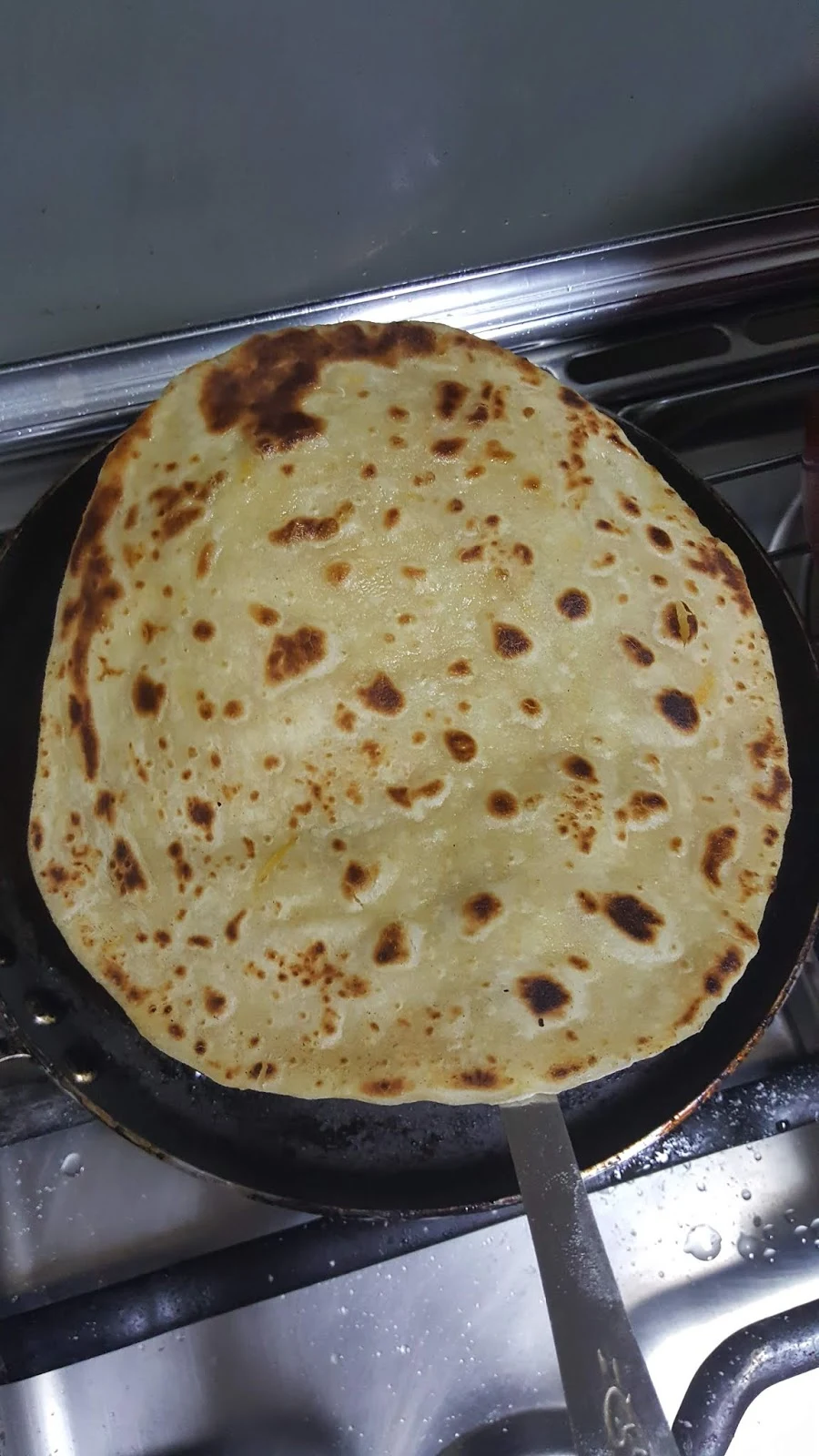Chapati
Monday, 4 May 2020
I love tips and tricks to getting soft chapatis, so far I have several ways I have learnt to fold chapati so that you get the softest chapati full of layers. I have already done 2 ways that I have already shared on my Youtbe channel. This method is very easy and the more practise you do it, the better you will become.
Wednesday, 18 March 2020
Chapati is also spelled as chapatti,
chappati, chapathi, or chappathi, also known as roti, safati, shabaati, phulka
and (in the Maldives) roshi. Chapatis
are made of whole-wheat flour known as atta, mixed into dough with water,
edible oil and optional salt in a mixing utensil called a parat, and is cooked
on a tava (flat skillet). Chapati dough is typically prepared with flour, salt
and water, kneaded with the knuckles of the hand made into a fist and left to
proof for at least 10 or 15 minutes to an hour for the gluten in the dough to
develop. After proofing, the dough becomes softer and more pliable. Small
portions of the dough are pinched off and formed into round balls that are
pressed between the two palms to form discs which are then dipped into flour
and rolled out on a circular rolling board (a chakla), using a rolling pin
known as a velan or belan, into a flat disc.The rolled-out dough is then
thrown on the preheated dry tava and cooked on both sides.
Friday, 12 April 2019
Monday, 1 April 2019
Want to add vibrant color and taste to your simple chapati, why not add grated carrots! Chapati as you know has always been my favorite meals to cook and I always try to find ways to make them more delicious. Whether it is wholewheat or all purpose flour, chapati is a delicious meal that can be served for breakfast, lunch or even dinner. The best part is that chapati is great for warming up to eat the next day. To ensure that they do not dry up and become dry and hard the next day, you need to cook them soft and this method I used guarantees you soft chapati that will keep soft even for 3 days!
Subscribe to:
Comments (Atom)




Social Media
Search